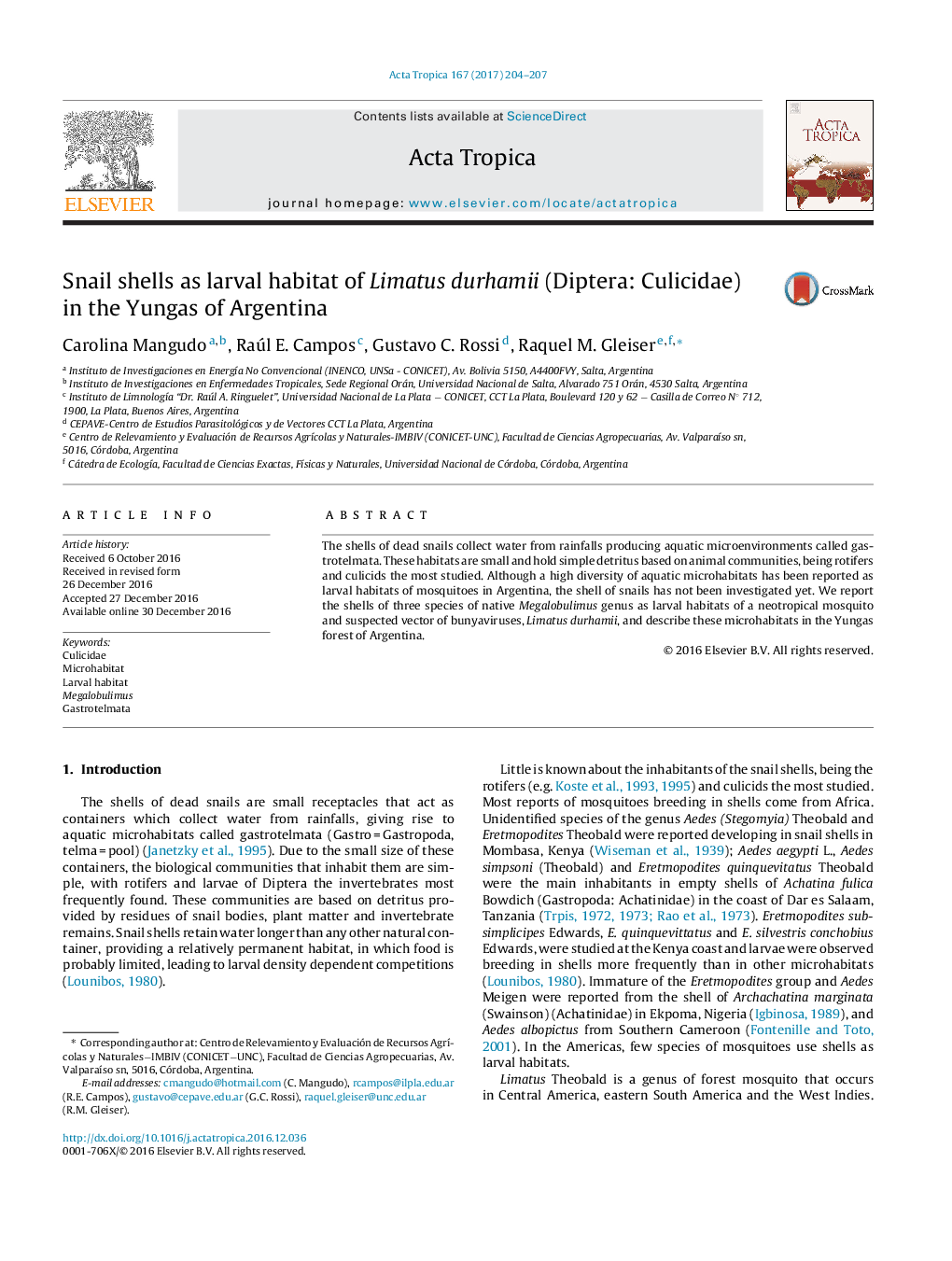| Article ID | Journal | Published Year | Pages | File Type |
|---|---|---|---|---|
| 5670963 | Acta Tropica | 2017 | 4 Pages |
â¢Shells of three species of Megalobulimus snails were mosquito larval habitats.â¢The aquatic fauna was Li. durhamii immature and Psychodidae larvae.â¢The average number of Li. durhamii per snail shell was 11.6, ranged from 1 to 27.â¢Water volume had a significant effect on mosquito abundance.
The shells of dead snails collect water from rainfalls producing aquatic microenvironments called gastrotelmata. These habitats are small and hold simple detritus based on animal communities, being rotifers and culicids the most studied. Although a high diversity of aquatic microhabitats has been reported as larval habitats of mosquitoes in Argentina, the shell of snails has not been investigated yet. We report the shells of three species of native Megalobulimus genus as larval habitats of a neotropical mosquito and suspected vector of bunyaviruses, Limatus durhamii, and describe these microhabitats in the Yungas forest of Argentina.
Graphical abstractThe shells of three species of Megalobulimus genus are larval habitats of a native mosquito, Limatus durhamii, in the Yungas forest of Argentina.Download high-res image (114KB)Download full-size image
